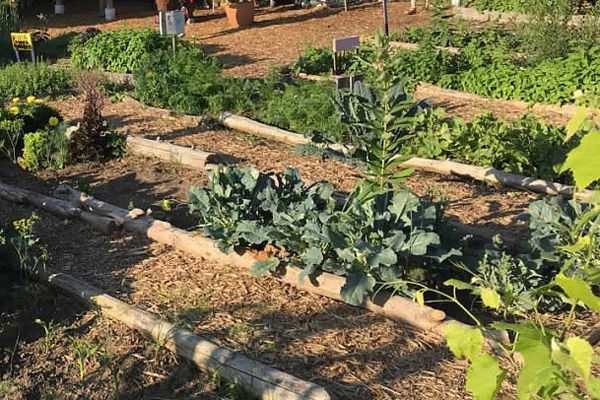The Definitive Guide to City Blooming
The Definitive Guide to City Blooming
Blog Article
Not known Details About City Blooming
Table of ContentsExamine This Report about City BloomingGetting The City Blooming To WorkSome Of City BloomingSome Known Questions About City Blooming.The 8-Minute Rule for City Blooming
Intrigued in growing food to buy in the City of Chicago? Considering starting a community yard? Modifications to the Chicago Zoning Ordinance permit farming uses like community gardens and city ranches in lots of components of the city. Below is a checklist of frequently asked questions regarding the policies and policies that cultivators need to think about when planning a metropolitan agriculture job.
The zoning change does not customize any kind of other codes dealing with composting, structure licenses, purchasing or renting City possessed residential property, service licenses or ecological contamination. There are existing codes that manage these concerns and they continue to be completely result and might be relevant to your project. Area gardens are commonly owned or taken care of by public entities, civic companies or community-based organizations and kept by volunteers.
Urban ranches expand food that is planned to be sold, either on a nonprofit or for-profit basis. Due to their business objective, metropolitan ranches need a service permit.
The Facts About City Blooming Revealed
The amount of compost product can not surpass 25 cubic lawns at any kind of given time according to the standards in 7-28-715 of the City's Municipal Code. Due to the fact that the soil at most brand-new garden websites needs amending, garden compost, dirt, timber chips, or other products can be obtained to create or improve the expanding area.

If a structure license is required then the hoophouse will be thought about an accessory building. You can locate out more about the structure license requirements by contacting the Department of Structures. The 25,000-square-foot size limit is meant to avoid a solitary area yard from dominating an offered block or taking away from the block's existing residential or commercial personality.
The limitation does not use to gardens located in Public Open Room (POS) districts. Can there be even more than one neighborhood garden that is 25,000 square feet on a single block? Fencing is not needed, nonetheless, yards that have Go Here large car park locations might be required to set up fencing or other landscaping attributes.
The Only Guide for City Blooming
B1 & B2 areas call for that all commercial use tasks be carried out inside. Is fencing needed for metropolitan farms? Fencings may be needed, along with landscaping and screening, for particular vehicle parking areas and exterior job or storage locations depending on area and the details activity taking location.
Urban farms require structure authorizations and zoning approvals prior to construction (indoor plants). Various other types of city review might be needed depending on particular structures, activities, dimension, landscape design, licensing, public heath and stormwater administration issues.
The Department of Organization Matters and Consumer Security can assist determine the specific kind of business permit that's required. Off street car parking is required for the majority of industrial jobs in Chicago. The called for number of car park rooms is based on the number of staff members working on site and not the square footage of the expanding area.
An Unbiased View of City Blooming

A city farm can market compost material created on site, however, the procedure needs to conform with the policies in 7-28-715 of the Chicago Municipal Code. Aquaponic systems are permitted inside on city ranches in several zoning areas.
Approximately 5 hives or swarms of honey might be maintained as an accessory usage. Beekeepers need to sign up with the Illinois Department of Agriculture. For more details regarding the recommended zoning change you may speak to the Division of Real Estate and Economic Development, Bureau of Preparation and Zoning at 312.744.8563.
Farming in cities and city areas An urban farm in Chicago. Urban farming refers to different methods of cultivating. https://www.openstreetmap.org/user/cityblooming, processing, and distributing food in metropolitan areas. The term also puts on the location activities of pet husbandry, tank farming, beekeeping, and gardening in an urban context. Urban farming is distinguished from peri-urban farming, which occurs in backwoods beside residential areas.
City Blooming for Beginners
, that look for to form social networks established on a shared ethos of nature and neighborhood holism. These networks can develop by means of formal institutional support, coming to be incorporated into neighborhood town planning as a "shift town" motion for lasting city growth.
Some of the very first evidence of metropolitan farming comes from Mesopotamia.
Report this page